Captain Cook Snorkel Tour A Complete Guide
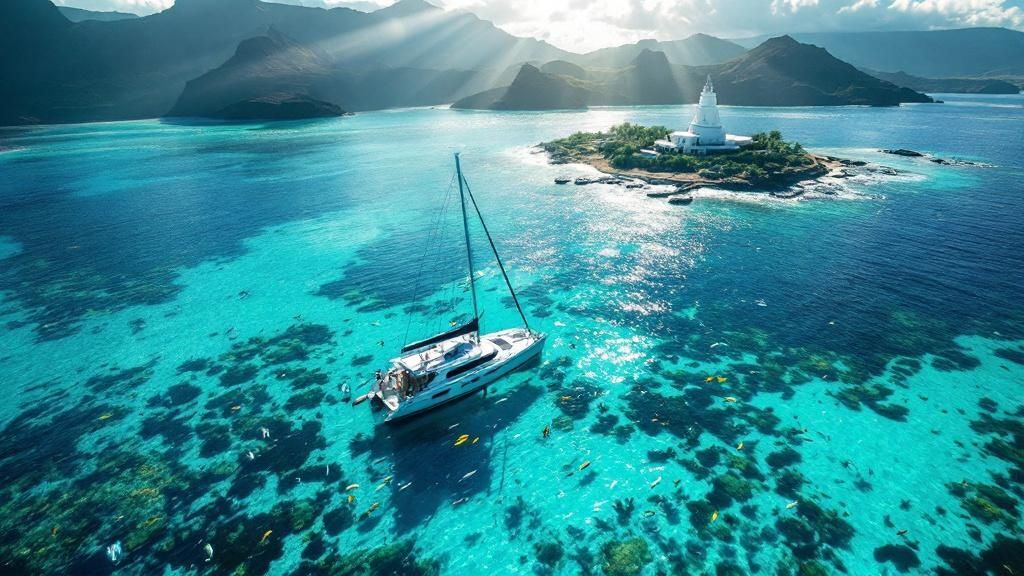
Picture this: you're gliding through impossibly clear turquoise water, surrounded by shimmering schools of tropical fish, with the dramatic volcanic coastline of the Big Island as your backdrop. That's the feeling of a Captain Cook snorkel tour, and it’s an experience that perfectly captures the magic of Hawaii. This isn't just another boat trip; it’s a full-on immersion into a protected marine sanctuary rich with history.
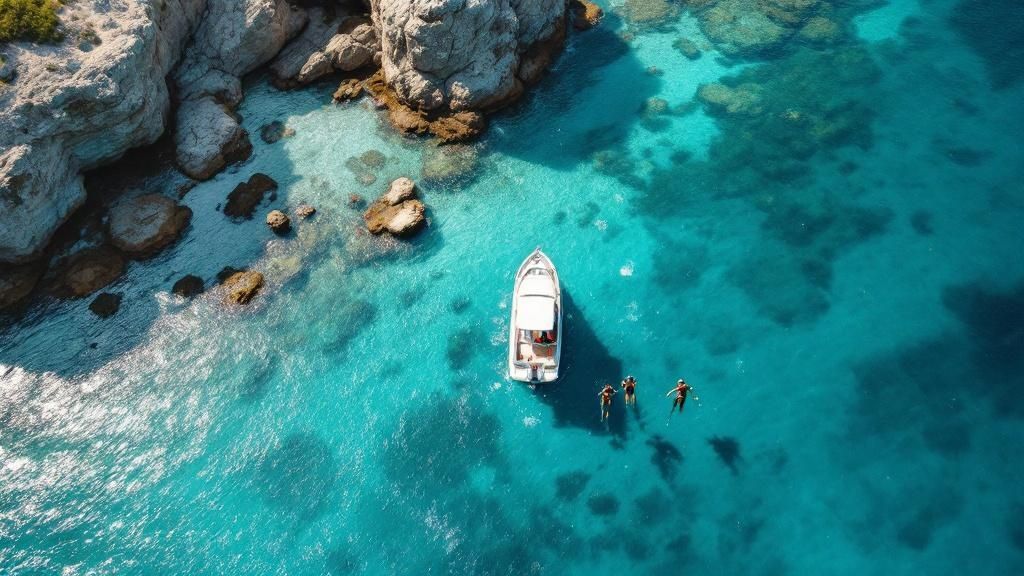
Why This Is Hawaiis Most Famous Snorkel Tour
Let's be clear: a Captain Cook snorkel tour is in a league of its own. It’s not just one thing that makes it stand out, but the powerful combination of pristine nature and deep-rooted history all wrapped up in the sacred Kealakekua Bay. This spot isn’t just beautiful by chance; it’s a designated Marine Life Conservation District. That official protection is the secret to its incredibly healthy and vibrant underwater world.
Thanks to its protected status, the bay boasts some of the clearest water in all of Hawaii. We're talking visibility that often pushes past 100 feet. The water here is also famously calm and sheltered, making it an ideal spot for everyone from first-time snorkelers to seasoned underwater explorers.
A Fusion of History and Marine Life
What really takes this trip from a great snorkel spot to a legendary Big Island experience is the history. You're swimming in the very place where Captain James Cook first made contact with native Hawaiians back in 1779—a moment that changed the islands forever. You’re not just floating over coral reefs; you’re floating through a living museum.
This powerful story is a huge part of the appeal, drawing over 190,000 visitors here every year. In fact, an estimated 70% of those visitors are pulled in by this unique historical backdrop.
To give you a better idea of what makes this tour so special, here’s a quick rundown of what you can expect.
Captain Cook Snorkel Tour Highlights
| Feature | Description |
|---|---|
| Pristine Snorkeling | Explore vibrant coral reefs teeming with colorful fish in exceptionally clear, calm waters. |
| Historical Landmark | See the iconic Captain Cook Monument from the water and learn about the bay's storied past. |
| Abundant Wildlife | The protected status means frequent sightings of spinner dolphins and Hawaiian green sea turtles (honu). |
| Calm, Sheltered Bay | Ideal conditions for snorkelers of all skill levels, from beginners to experts. |
| Unbeatable Visibility | Water clarity often exceeds 100 feet, offering stunning underwater views. |
This tour is a rare chance to connect with Hawaii on a much deeper level. It’s an adventure that awakens your sense of wonder while giving you a real appreciation for the rich culture and history of these islands.
When you book this trip, you’re signing up for one of the most complete Hawaiian adventures you can find. To dive deeper into what to expect, check out our full guide to the Captain Cook snorkel tour.
Discover the History of Kealakekua Bay
A Captain Cook snorkel tour isn't just a boat ride; it's a journey back in time to one of the most pivotal historical sites in all of Hawaiʻi. When your boat anchors in the calm, protected waters of Kealakekua Bay, you're not just in a pretty spot—you're floating above a living museum where the Western and Hawaiian worlds first collided.
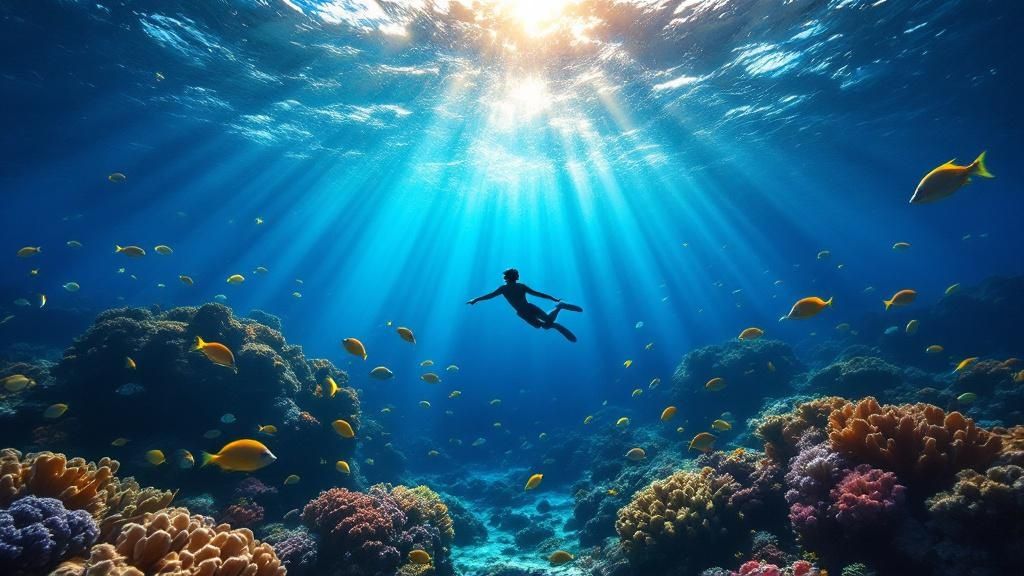
The whole experience feels like you've jumped right into a history book. The best tour guides don't just point out fish; they're storytellers. They recount the dramatic arrival of Captain James Cook in 1779, bringing the past to life by sharing both the Western perspective of exploration and the deeply significant Hawaiian viewpoint.
A Fateful Arrival During Makahiki
Captain Cook’s timing was, to put it mildly, uncanny. He sailed into Kealakekua Bay right in the middle of the Makahiki festival, a sacred season that lasted for months and was dedicated to Lono, the Hawaiian god of peace, farming, and fertility. During Makahiki, all warfare was forbidden (kapu), and the islands were consumed by celebration and reverence.
Cook's enormous ships, with their towering masts and huge white sails, looked strikingly similar to symbols associated with Lono. Because of this, many Hawaiians greeted him as a divine being, showering Cook and his crew with honors and supplies. The peaceful encounter, however, was about to take a tragic turn.
The initial reverence soured when a broken mast forced Cook to return to the bay unexpectedly. This return, falling outside the prophecies of Lono, strained relations and ultimately led to the confrontation where Cook was killed on February 14, 1779.
This complex and powerful story is a massive draw for visitors. In fact, an estimated 70% of people choose this tour specifically for its profound historical context, which transforms a fun day of swimming into a truly unforgettable voyage. A quality Captain Cook snorkel tour always handles this sensitive history with the respect it deserves, honoring the past by telling the full, complex story.
You can dive deeper into this amazing spot in our detailed guide on the Kealakekua Bay snorkeling tour.
The Monument and Its Story
While you're snorkeling, you can't miss the stark white obelisk standing on the shoreline—the Captain Cook Monument. This 27-foot structure marks the spot where the famous explorer died. It stands on a tiny piece of land that was deeded to the United Kingdom, so you're technically looking at foreign soil.
The monument is a quiet, permanent reminder of the world-changing events that happened right where you're swimming, forever linking this beautiful bay to a pivotal moment in global history.
Diving into the Underwater World of Kealakekua Bay
Get ready to plunge into what feels like a real-life, supersized aquarium. That moment when you slip into the water on a Captain Cook snorkel tour is something special. The energy is electric from the second your mask dips below the surface.
Because Kealakekua Bay is a protected Marine Life Conservation District, the whole underwater ecosystem is a bustling metropolis of color and activity. It's a world teeming with life.
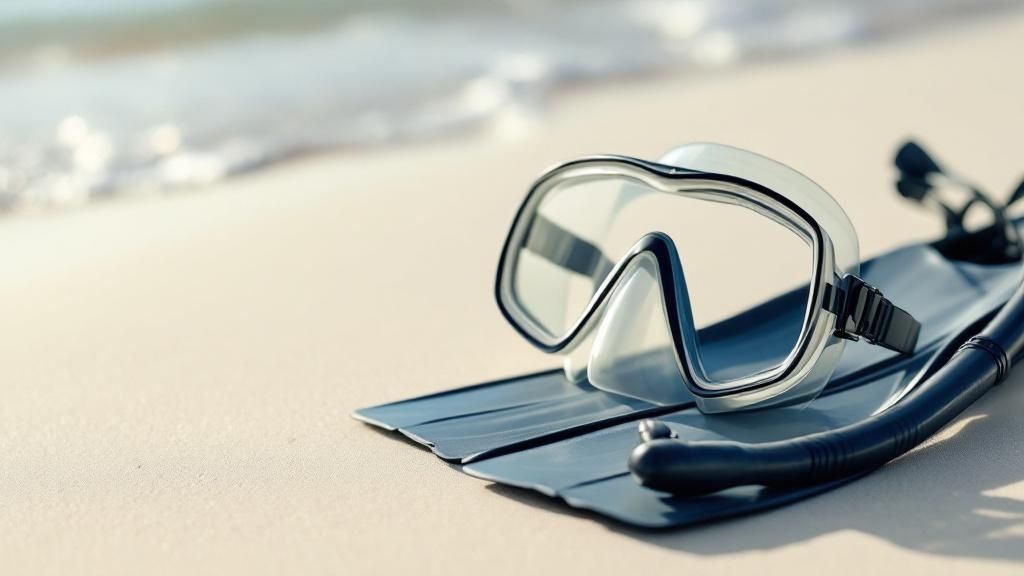
The water clarity here is just legendary. It’s not uncommon to see more than 100 feet in every direction. Honestly, it feels less like swimming and more like you're flying over a submerged landscape.
One minute, you’re caught in a glittering tornado of thousands of yellow tang. The next, you're just watching a peaceful Hawaiian green sea turtle glide effortlessly by. The bay's protected status is the secret sauce here, allowing the coral reef to stay incredibly healthy—the perfect foundation for the wild biodiversity you're about to see. You're not just looking at fish; you're a quiet visitor in their thriving, ancient home.
So, What Will You See Down There?
Every single trip into the bay is a unique roll of the dice, but the cast of characters you're likely to meet is consistently incredible. This protected area is a safe haven for some of Hawaiʻi’s most iconic and beloved marine life.
Here are a few of the regulars you should keep an eye out for on your adventure:
- Hawaiian Green Sea Turtles (Honu): Spotting one of these ancient, graceful creatures is always a highlight. You'll often see them cruising over the reef or just chilling on the sandy bottom. They are a truly revered sight in Hawaiian culture.
- Spinner Dolphins (Naiʻa): The bay is a crucial rest stop for local pods of spinner dolphins. While regulations prohibit swimming with them (for their own protection), watching their acrobatic leaps and spins from the boat is an absolutely unforgettable show.
- Colorful Reef Fish: Prepare for a visual feast of tropical fish. You can expect to see brilliant schools of yellow tangs, parrotfish (uhu) nibbling on coral, delicate butterflyfish, and of course, Hawaiʻi’s famously named state fish, the humuhumunukunukuāpuaʻa.
This explosion of life didn't just happen by chance. The continued health of Kealakekua Bay is a shared responsibility, and every visitor plays a part.
The bay’s status as a Marine Life Conservation District means no fishing is allowed. This lets fish populations grow to impressive sizes and numbers, creating a more natural and dynamic ecosystem for snorkelers to witness firsthand.
Your tour crew gets this better than anyone. They'll show you the best ways to enjoy the wildlife without causing any stress. By following simple rules—like never touching the coral or the animals and only using reef-safe sunscreen—you help make sure this underwater paradise stays pristine for generations to come. You're not just a tourist; you're a temporary guardian of this incredible natural treasure.
How to Choose Your Perfect Snorkel Tour
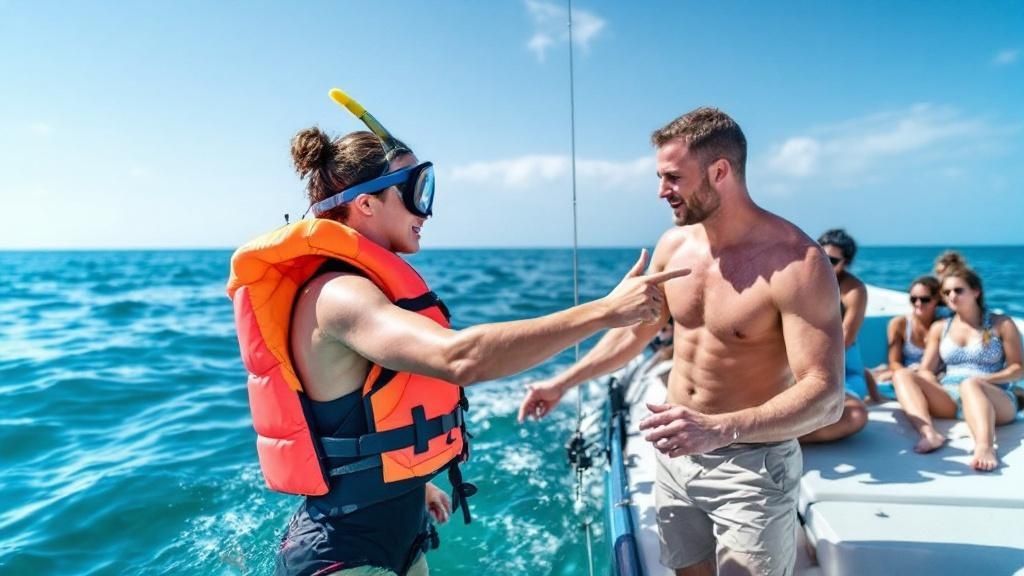
Picking the right Captain Cook snorkel tour is a lot like choosing the perfect soundtrack for a movie—the right one just makes the whole experience unforgettable. Not all tours are built the same, and your choice will totally shape the day, from the vibe on the boat to the gear you use. The trick is to match the tour with what you're hoping to get out of your day on the water.
So, what’s your ideal day look like? Are you picturing a lively, social scene with music, food, and plenty of room to spread out? Or is a quieter, more focused expedition into Kealakekua Bay's natural wonders more your speed?
Big Boat Fun vs. Small Group Adventure
Honestly, the biggest fork in the road is the size of the boat. Large, stable catamarans are awesome for families or anyone who gets a little nervous about a bumpy ride. They often feel like a party on the water, decked out with waterslides, catered lunches, and onboard restrooms. Comfort and amenities are the name of the game here.
On the flip side, you've got the smaller vessels like zodiac rafts. These offer a completely different kind of day—more intimate, more thrilling. With fewer people, you get more one-on-one time with the crew, who can really dive deep into the bay’s history and point out specific marine life. This is the way to go if you want a more personal connection with the place.
Because the Big Island has such a competitive tour scene, there’s an operator for just about every budget and preference. You'll find intimate tours for 6-12 people running from $120 to $180, and larger boats hosting 20 to 40 guests for longer trips that include a full lunch, typically priced between $150 and $220. It's worth exploring how different companies set up their trips to find what works for you.
To help you sort through the options, here's a quick look at how different tour types stack up.
Comparing Snorkel Tour Operators
| Tour Type | Best For | Typical Group Size | Common Amenities |
|---|---|---|---|
| Large Catamaran | Families, large groups, those seeking comfort and a social vibe. | 20-40+ | Onboard restrooms, catered lunch, waterslides, shaded seating. |
| Zodiac Raft | Thrill-seekers, experienced snorkelers, small groups wanting a personal touch. | 6-15 | Fast ride, close-up views of sea caves, knowledgeable guides. |
| Sailboat Charter | Couples, small private groups, those wanting a relaxed and scenic journey. | 2-12 | Sailing experience, quiet atmosphere, personalized itinerary. |
| Kayak & Snorkel | DIY adventurers, fitness enthusiasts, those wanting to explore at their own pace. | 1-10 | Physical activity, freedom to explore, no engine noise. |
Ultimately, the best choice really comes down to your personal style.
Key Questions to Ask Before Booking
To find that perfect fit, just ask yourself a few simple questions. Your answers will narrow the field down in no time and point you straight to the right Captain Cook snorkel tour for your crew.
- What's the group size? Do you want a small, cozy group or a bigger, more social party?
- What’s the tour's focus? Is it all about the history and ecology, or more about fun and relaxation?
- What's included? Always check if snorkel gear, food, drinks, and floaties are part of the deal.
- What kind of boat is it? Does a roomy catamaran or a zippy zodiac raft sound more like your kind of adventure?
The best tour for you is the one that lines up with what you're picturing for your day. Whether that’s a history-packed eco-tour or a laid-back party boat, knowing what you want is the first step to an amazing time.
At the end of the day, every tour operator is taking you to the same incredible spot. By picking one that matches your style, you’re making sure your trip to Kealakekua Bay is everything you hoped it would be. This sheer variety is a big reason why Kona snorkel tours are the best in Hawaii—there's truly a perfect match for everyone.
Getting Ready for Your Snorkel Adventure
A little bit of prep work goes a long way toward making your Captain Cook snorkel tour a day you'll never forget. Thinking ahead about what to bring means you can just kick back and soak it all in from the second you step on the boat.
Most tour operators will have the big stuff covered—your mask, snorkel, and fins. But tossing a few personal items in your bag can make a world of difference in your comfort. Think of it like packing for a day hike; the right extras mean you're ready for whatever the Hawaiian sun and sea throw your way.
Your Essential Packing Checklist
Here’s a quick list of things you'll be happy you brought. Checking these off before you go will help make your day smooth, comfortable, and totally memorable.
- Reef-Safe Sunscreen: This one is non-negotiable. Your average sunscreen is loaded with chemicals like oxybenzone that are seriously harmful to coral reefs. To protect the fragile ecosystem in Kealakekua Bay, always grab a mineral-based sunscreen with zinc oxide.
- Reusable Water Bottle: Staying hydrated out there is key. While tours usually have water, bringing your own bottle is a simple way to reduce plastic waste and stay green.
- Towel and Dry Clothes: Trust me, you'll be glad you have a dry towel and a fresh change of clothes for that relaxing boat ride back to the harbor.
- Underwater Camera: You're about to see a whole other world down there! A waterproof camera is perfect for snapping photos of the colorful schools of fish and maybe even a passing sea turtle.
- Hat and Polarized Sunglasses: The sun's glare reflecting off the water can be pretty intense. A good hat and a pair of polarized sunglasses are must-haves for staying comfortable on the boat.
Beginner Tips and Safety First
Getting comfortable with your gear is the first step, especially if you're new to snorkeling. Before you even hop in the water, take a second to make sure your mask fits snugly against your face to keep water from leaking in. Then, just practice taking slow, calm breaths through your snorkel.
Being prepared for any situation is just smart planning for any adventure, particularly in more remote spots. Having a good handle on wilderness safety and remote area first aid principles can give you real peace of mind, no matter where you're headed.
Snorkeling Safely and Respectfully in the Bay
Kealakekua Bay is a living, breathing treasure. When you hop on a captain cook snorkel tour, you’re not just a visitor; you become a temporary guardian of this incredible underwater world. For any good tour operator, your safety and the health of the reef are the two biggest priorities, period.
The number one rule is simple: listen to your lifeguard-certified guides. These folks know the bay’s currents and conditions like the back of their hand. They’ll give you a full safety briefing before you even dip a toe in the water. Just follow their lead—it’s the surest way to have a safe and amazing time.
Being a Good Steward of the Bay
Snorkeling here isn’t just about what you see; it's about how you act. You have a responsibility to protect the very ecosystem you came all this way to admire. Those vibrant coral gardens are unbelievably fragile. Seriously, even a light touch from a finger or a fin can cause damage that lasts forever.
Think of the coral reef like a living art gallery. The golden rule is simple: look, but don't touch. By keeping your hands and fins to yourself, you’re helping preserve its beauty for everyone who comes after you.
To really do your part, just follow these common-sense guidelines:
- Give Wildlife Space: Admire sea turtles, dolphins, and fish from a comfortable distance. Never chase or crowd them. It stresses them out and messes with their natural behavior.
- Don't Feed the Fish: Tossing food to the fish might seem harmless, but it makes them dependent on people and can be bad for their health. Let them forage for food like they’re supposed to.
- Use Reef-Safe Sunscreen: Your typical sunscreen has chemicals that are poison to coral. Always grab a mineral-based sunscreen to protect both your skin and the reef.
The best local companies really drill this eco-friendly mindset into their operations. The fact that some of these tours have been running for over 30 years says it all. It shows a deep commitment to keeping guests safe and the environment healthy, which is how they've earned so much trust over the years. You can learn more about why these responsible tours are so popular and how they protect the 315-acre Kealakekua Bay marine sanctuary.
Your Questions Answered
As you get ready for your big day out on the water, you probably have a few questions rolling around. We get it. Here are the most common things people ask, with clear, straight-up answers so you can feel totally prepared for your Captain Cook snorkel tour.
Is This Tour Good For Beginners?
Absolutely. This tour is pretty much perfect if you're new to snorkeling. Kealakekua Bay is a natural marine sanctuary, which means the water is usually incredibly calm and clear—almost like a giant swimming pool.
Tour crews always have flotation devices like noodles and vests on hand. They'll also give you a full rundown and some pro tips before you even touch the water. It’s a super safe and chill environment, making it a fantastic spot for kids and first-timers to get comfortable and fall in love with what’s under the surface.
What Is The Best Time Of Year To Go?
You really can't go wrong with a Captain Cook snorkel tour any time of year. That said, if you're trying to pick the absolute best time, go for a morning tour. The ocean tends to be at its calmest early in the day, which means visibility underwater is at its peak.
While Hawaii’s weather is great year-round, the summer months from April to October generally have the most consistently calm and predictable sea conditions, which is ideal for snorkeling.
One of the biggest perks of a morning tour is the wildlife. Spinner dolphins often hang out and rest in the bay during the morning hours. Plus, that glassy, calm water just makes for a much smoother and more pleasant boat ride over.
Will I See Dolphins Or Whales?
There's a very good chance you'll see dolphins. Pods of spinner dolphins are frequent visitors to Kealakekua Bay, especially in the morning when they come in to rest and play. Seeing them leap and spin from the boat is a sight you won't forget.
And if you're here during whale season (December through March), your odds of spotting humpback whales are extremely high. They migrate to Hawaiian waters to breed and give birth, and catching a glimpse of these giants is an incredible bonus to an already amazing trip.
Should I Book My Snorkel Tour In Advance?
Yes, one hundred percent. Booking ahead is something we can't recommend enough. The Captain Cook snorkel tour is one of the most popular things to do on the entire Big Island. The best tour companies fill up fast, sometimes weeks in advance.
To make sure you get a spot with the operator you want and avoid showing up disappointed, lock in your tour before you even get on the plane. This is especially true if you’re traveling during peak times like summer or over the winter holidays.
Ready to dive into this unforgettable adventure? Kona Snorkel Trips offers premier, guided experiences in Kealakekua Bay, ensuring a safe, fun, and memorable day for everyone. Book your Captain Cook snorkel tour today!
